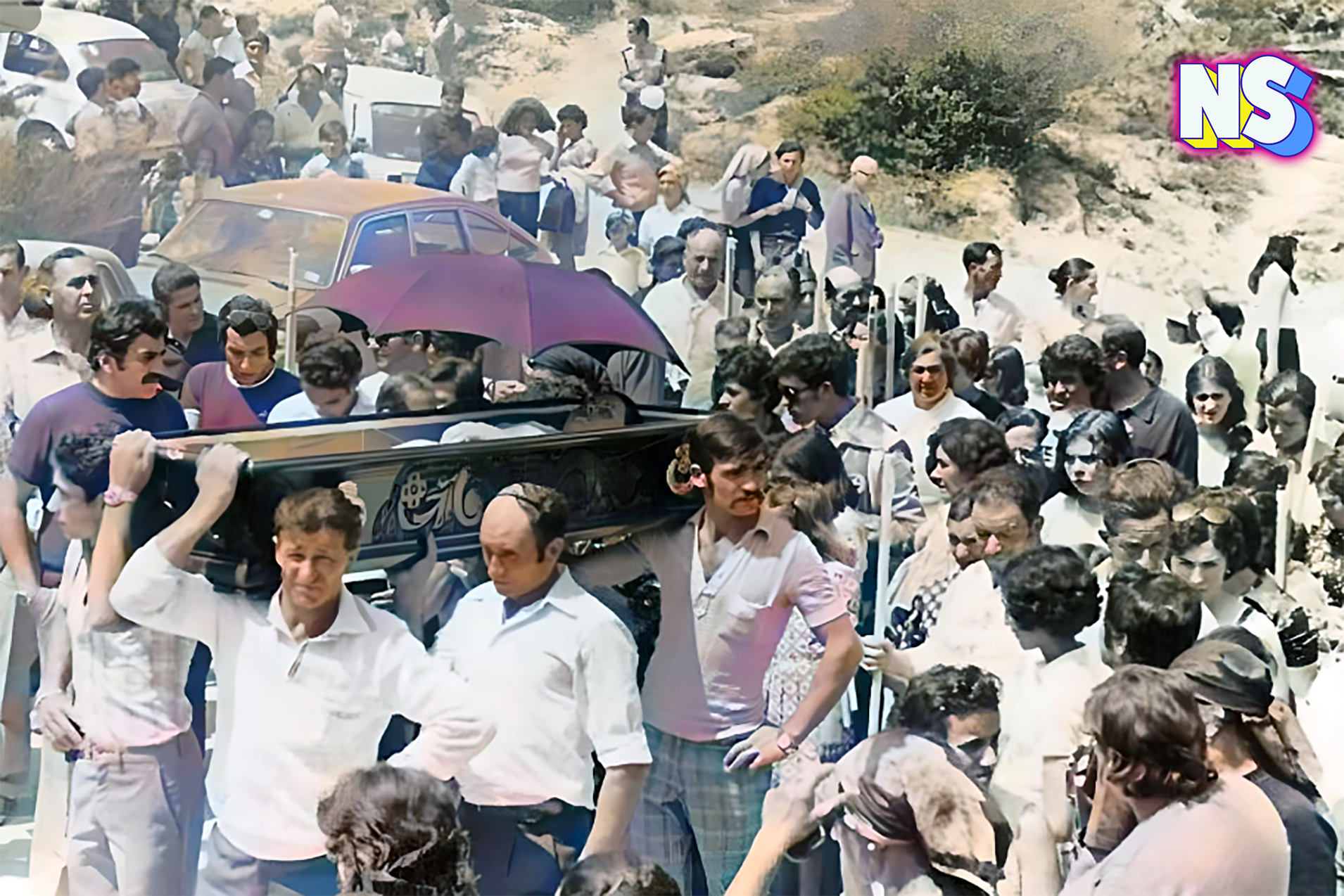Photo Credit: Ponte..Nas Ondas!/ Flickr; Illustration by Nuestro Stories.
Have you experienced a near-death illness recently? Come face to face with your mortality, only to narrowly eek out alive? You're in luck!
In addition to getting a second chance at life, you have now earned a legitimate reason to make your way to the Northwest region of Spain, Galicia, and take your spot in a coffin at the Festival of Near Death Experiences, known locally as the Fiesta de Santa Marta de Ribarteme.
Here, in the tiny town of Santa Marta de Ribarteme, a uniquely macabre festival bearing the town’s name attracts the grateful near-dead from the world over.
Festival of Near Death Experiences
During the annual festival, held every July 29, those who have suffered a near death experience in the past year are paraded through the streets by your loved ones and extended family in an open casket procession where you get to live out your own funeral procession.
It’s far less strange than it sounds, according to the locals. “It is a very serene, reflective atmosphere. It is not macabre. … It is an expression of joie de vivre. … We all gain spiritual strength from this day. Not just those who have escaped,” says Generosa, an elderly woman who has not missed the festival in 60 years. “We are here to touch and be touched by her,” she continues, referring to Santa Marta. “To communicate with her. To be saved by her.”
It's all part of a big “thank you” to the region’s patron saint, Santa Marta, for the on-going gift of life.
This unique festival has become more than just a teary-eyed jubilation for locals. It’s also become a local cottage industry.
Borja, a local tourism board official reached by phone, estimates that between 1,500 – 3,000 Spaniards descend on the tiny hamlet each year for the one-day celebration. “Foreigners? They probably increase the attendance numbers by another 1,000. It’s big business for us around here.”
À la New Orleans, this economic driver has elicited such fine products as Galician cemetery tours, as well as casket-themed souvenirs like refrigerator magnets- t-shirts, and bottle openers. And for 100 Euros, you can even rent a life-size caskets to use in the procession.
A Centuries-old Tradition
Dating back to medieval times, its exact origin is much less known about than its perceived healing power. “This was a feudal society well into the 20th century, where people relied on their faith and local healers because they had no access to modern medicine,” Xosé Manuel Rodríguez Méndez, a town hall official, noted to the New York Times.
"It is symbolic of the victory of life over death," Alfonso Besada Paraje, a local priest told the BBC. However, not every local clergyman is a fan.
Father Francisco Javier de Ramiro Crespo, the relatively new head priest of the parish where it all takes place, flat out shut down the procession in 2021 and 2022. While some saw this as a continuation of Covid lockdown protocol, which suspended the festival in 2020, many others saw this as a thinly-veiled attack on what is considered to be as sacred as faith itself to parishioners across the region.
De Ramiro, defended his actions, saying, “I am dedicated to evangelizing and not promoting superstitions, folklore, or witchcraft.”
The locals don’t seem to care about outsider views on their unique day of celebration. To them, it’s as much rooted in the local history of the Church as it is in the mysticism upheld by its parishioners.
Much to the chagrin of Father De Ramiro, the festival made a triumphant return this past July. While its future is never truly certain, people’s faith in its healing power seems to be everlasting.
So the next time, someone giddily gloats to you about some obscure, gruesome Spanish summer tradition they picked up while studying abroad or backpacking through Europe (the Running of The Bulls in Pamplona), you can tell them about a far stranger event.
The most important question now is, have you picked out your coffin yet?





